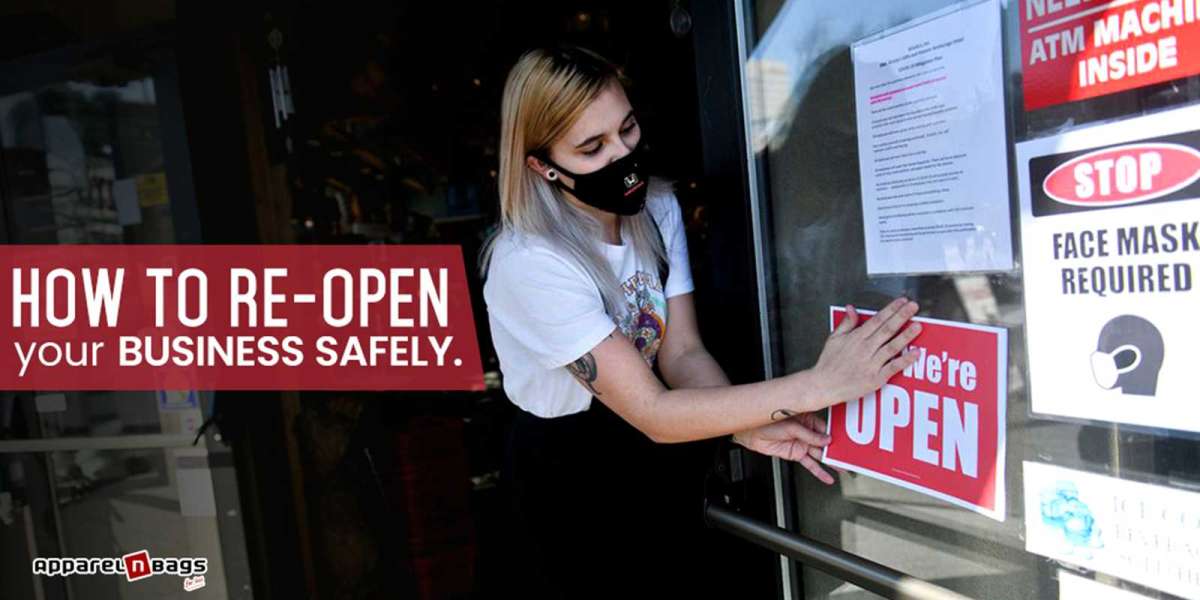Follow Proper Social Distancing Guidelines
By now, everyone has heard of social distancing—when you stay at least six feet away from other people, stay away from crowded places, and avoid gathering in groups. The U.S. Centers for Disease Control and Prevention (CDC) says that “limiting face-to-face contact with others is the best way to reduce the spread of coronavirus disease.
While social distancing is a proven and effective way to slow the spread of COVID-19, it can be difficult to maintain in the workplace. Still, social distancing is the new norm and will be for the foreseeable future. Depending on your workspace, here are some ways to help employees and customers keep a safe distance:
- Rethink desks, displays, and workspaces to create more distance.
- Move some staff to different workstations or stagger work hours to limit the number of workers in one area at any given time.
- Limit the number of seats in common areas.
- In places where workers or customers wait in lines, use tape to mark six-foot intervals.
- Place signs or use announcements to remind workers and customers to maintain social distance.
- Manage breakrooms to limit the number of people who gather at one time.
- Encourage workers to skip previously customary greetings like handshakes, hugs, and cheek-kisses.
- Post signs outside the office or shop that advice people not to enter if they’ve had the Coronavirus symptoms or have been in contact with someone who has been infected.
Set a good example for your workers and customers. If you’re asking them to keep a social distance, make sure you do that too.
Wash Your Hands
According to the CDC, the Coronavirus spreads mainly among people who are in close contact for a prolonged period. It spreads when an infected person (who may or may not have symptoms) coughs, sneezes, or talks and launches droplets into the air, which can infect other people. It’s also possible to contract the Coronavirus if you touch something that has the virus and then touch your own mouth, nose, or eyes. The pandemic can live on surfaces for hours or even days, depending on factors like humidity and sunlight.
While social distancing is the best way to slow the spread of the virus, it’s also essential to bump up your efforts to maintain a clean and sanitary workplace. Start by installing signs to encourage workers to wash their hands with soap and water for at least 20 seconds
Your workers should wash their hands when:
- They get to work
- After they sneeze, cough, or blow their nose
- Before and after eating
- Before and after touching their eyes, nose, and mouth
- After they interact with coworkers and customers
- After they touch displays and other equipment
- After they visit the restroom or take breaks
Good handwashing takes practice. Encourage workers to wash their hands frequently. What you can also do is that you can install hand sanitizers for your workers and tell them to use it. It is also a great idea to make hand sanitizer available to your customers, and visitors. If you don’t have them already, install hand sanitizer dispensers in common areas, at workstations, and anywhere people are likely to interact or touch surfaces that could be contaminated with the virus.
Ask Your Employees to Wear Cloth Face Masks
By now you must know exactly how important it is to wear face masks. Face masks act as that crucial barrier that stops the virus from entering the respiratory tract of a person and help stop the spread. The face masks prevent the wearer from touching his face again and again and so the coronavirus does not get transferred from the wearer’s hand to his or her face. They act as the last line of defense and prevent airborne coronavirus from entering as well. The virus gets airborne when a person infected with the coronavirus sneezes.
Along with protection face masks can also help you market your business and make a good name in the minds of your consumers. You can have your workers and staff wear Custom Cloth Face Masks. The face masks will have your business name or logo for the world to see. Wherever your staff and workers go wearing the custom face mask, they’ll be promoting your business while being protected. More and more people will get to know about your business. Not only will this promote your business but it will also show your consumers and other people that you care about your employees’ safety and well-being. People will love you and would want to conduct business with you.
Set a good example for your workers and customers. If you’re asking them to wear the custom cloth face masks, you better wear one yourself.
Clean and Disinfect your Workplace
It’s always smart to maintain a clean workspace, but it’s especially important now. Clean and disinfect frequently touched surfaces at least once a day. A do the cleaning much more frequently in high-traffic areas such as check-out counters in a store or the counter of your office’s kitchen and break areas.
Be sure to clean doorknobs, light switches, countertops, handles, tables, desks, keyboards, remote controls, elevator buttons, toilets (including handles), faucets, sinks, cash registers/point of sale (POS), displays, business equipment, and phones. Encourage your workers to clean their personal phones and any other equipment they bring from home into the workplace.
Of course, all these cleanings and disinfecting supplies can be dangerous if not used properly. Be sure to provide guidelines for using them safely and equip your workers with proper Personal Protective Equipment (PPE) such as gloves, face masks, and face shields and etc.
Set up the Right Work from Home Policy
One of the biggest challenges that large-city businesses now face is how to keep workers safe during the commute. It’s nearly impossible to adhere to the CDC’s recommended six-foot distance on a crowded bus, train, or subway. Some companies are looking into subsidizing workers’ car payments or leases to encourage private transport, while others are in the market for satellite offices outside of city centers. If you’re a small business, however, these options may not be feasible. It’s likely that some (or all) of your workers have worked from home since the lockdown started. Most of them would like to continue to do so, especially if they don’t feel safe returning to the workplace. Now’s the time to develop a policy for how you’ll handle operations if people want to keep working from home.
You may already have set up systems for conducting business online (think: Zoom, Slack, Skype, Facetime, and the like). Think about what you need going forward and how to maintain and support these functions. It’s also a great time to work on your long-term plans and be prepared and make it easier to shift to a work from home setup the next time around. To avoid trouble, create a work-from-home policy that is fair to all employees, and also provide your team with some basic essentials that can help them in working from home effectively. These basic essentials may include custom water bottles, custom power banks, custom notebooks, custom earphones and etc.
Conduct Proper Health Screenings of Your Employees
It may seem like a smart safety measure to take your workers’ temperatures before they enter the workplace. However, managing the practice is easier said than done because it introduces three potential problems:
How do you keep the biometric data private once you gather it?
How do you compensate workers who have to wait in line to be tested?
How do you maintain social distancing while workers wait in line?
Some states have guidelines in place that can help you navigate health screenings. Still, you may have to find creative ways to mitigate any potential problems. For example, you could use instant-read thermometers, not record any data, and stagger work hours so that employees don’t have to wait in line to be tested. If possible, contract with healthcare professionals to do the testing instead of relying on untrained staffers to do so.
Being an entrepreneur is never easy, but the Coronavirus has introduced a whole new level of problem-solving for small businesses. When it’s time to reopen your business, taking these steps can help ensure you’re doing everything possible to protect yourself, your workers, and your customers.Top of Form








